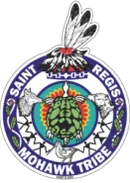Result of Historic Collaboration with Saint Regis Mohawk Tribe and New York State Museum
Completed Habitat Upgrades Save Estimated 500,000 Freshwater Mussels, Boost River Water Quality Following Ongoing Cleanup Project
New York State Department of Environmental Conservation (DEC) Commissioner Basil Seggos today announced the completion of a significant Grasse River restoration project to help address a legacy of contamination and improve habitat in the region. This habitat restoration milestone is the result of a landmark DEC agreement with Arconic in July 2020, and DEC’s ongoing collaboration with the Saint Regis Mohawk Tribe, New York State Museum, and other partners committed to the Grasse River’s ecological renewal. This work was completed in conjunction with the U.S. Environmental Protection Agency-led cleanup of the Grasse River, a federal National Priorities List site.
“Thanks to DEC’s innovative strategies to protect river habitat and our aggressive and sustained efforts to hold parties responsible for harmful contamination, hundreds of thousands of freshwater mussels and the Grasse River ecosystems that depend on them will thrive once again,” Commissioner Seggos said. “The Grasse River provides habitat not only for the mussels, but also this area's renowned bass, walleye, and muskie populations. We couldn’t have done this without the help of our partners from the Saint Regis Mohawk Tribe and New York State Museum."
Saint Regis Mohawk Tribal Council said, “As human beings, we are dependent on creation for our survival. As sophisticated as we think we are, the smallest creatures can accomplish great feats, such as providing clean water simply by following their original instructions. We are always grateful for them and those that take action in acknowledging their important purpose.”
In December 2019, DEC and the Saint Regis Mohawk Tribe signed a historic cooperative agreement to accelerate the restoration of natural resources in the St. Lawrence River Area of Concern (AOC) at Massena/Akwesasne, which includes the Grasse River. As cleanup efforts began along the river, approximately 80 percent of the freshwater mussel community was determined to be at risk of destruction due to their inability to escape the work sites and the organism’s slow reproductive rate. The Grasse River's freshwater mussel community is remarkable for its density and diversity; at least 15 different species have been found here. The mussels perform the critical functions of nutrient cycling, sediment structure, and forage base.
DEC worked closely with the Saint Regis Mohawk Tribe and the New York State Museum to make this initiative successful. When DEC launched the inaugural Stewardship Appreciation Awards last year, the Grasse River Restoration Partners received the Innovation Award for work on this project. The restoration included:
- Moving nearly 500,000 freshwater mussels that would have been killed during the Grasse River cleanup. The relocated mussels are expected to help the remaining mussels recover and nearly doubled the population expected to survive;
- As required by DEC, Arconic installed 400 innovative “crib” structures to provide habitat diversity for fish until their natural habitat returns. The fish crib structures are made with cleaned, leftover construction materials, reducing the need for new materials;
- Improving the three largest freshwater wetland areas along the river by placing high quality soils, stabilizing areas of erosion, and planting native species. These efforts to restore the wetland will provide habitat for waterfowl, reptiles, and amphibians along the river; and
- Areas of upgraded habitat material are now providing a greater diversity of habitat for recovery of benthic invertebrates, an important food source for fish.
DEC will continue to oversee these projects as the river recovers to ensure the habitat recovers as expected. Additionally, DEC expects to oversee an effort to return the recovered mussels to remediated areas, possibly as early as 2022.
The Alcoa Massena-West Plant is an aluminum production plant on the north shore of the lower Grasse River. In the 1950s, Alcoa began using and discharging polychlorinated biphenyls (PCBs) through outfalls to the Grasse River, contaminating water and sediment. The cleanup selected by U.S. EPA for the Grasse River began in 2019, and includes dredging and backfilling approximately four miles of shallow water habitat and capping approximately 6.5 miles of deep-water habitat with clean material. For more information about the Grasse River Superfund Site, visit the U.S. EPA website.
Note: Photos attached courtesy of NYSDEC.
###

